-
 Bitcoin
Bitcoin $117600
0.25% -
 Ethereum
Ethereum $4424
0.10% -
 XRP
XRP $3.101
0.50% -
 Tether USDt
Tether USDt $1.001
-0.01% -
 BNB
BNB $836.2
1.26% -
 Solana
Solana $188.8
2.11% -
 USDC
USDC $1.000
0.01% -
 Dogecoin
Dogecoin $0.2301
0.57% -
 TRON
TRON $0.3485
-1.00% -
 Cardano
Cardano $0.9209
-1.34% -
 Hyperliquid
Hyperliquid $46.72
-1.19% -
 Chainlink
Chainlink $22.62
4.84% -
 Stellar
Stellar $0.4275
-0.38% -
 Sui
Sui $3.761
1.91% -
 Bitcoin Cash
Bitcoin Cash $586.7
-0.25% -
 Ethena USDe
Ethena USDe $1.001
0.01% -
 Hedera
Hedera $0.2510
2.06% -
 Avalanche
Avalanche $24.21
2.22% -
 Litecoin
Litecoin $119.7
1.07% -
 Toncoin
Toncoin $3.450
1.06% -
 UNUS SED LEO
UNUS SED LEO $9.411
-0.93% -
 Shiba Inu
Shiba Inu $0.00001298
1.20% -
 Uniswap
Uniswap $10.98
3.25% -
 Polkadot
Polkadot $3.961
2.16% -
 Dai
Dai $1.000
0.00% -
 Bitget Token
Bitget Token $4.642
0.95% -
 Cronos
Cronos $0.1514
0.57% -
 Ethena
Ethena $0.7290
3.78% -
 Monero
Monero $254.1
7.69% -
 Pepe
Pepe $0.00001102
2.47%
What is the role of public key encryption in HTTPS?
HTTPS uses public key encryption (RSA or ECC) to securely exchange a symmetric key during the initial handshake, enabling fast, encrypted communication; the website content itself is encrypted using the symmetric key.
Mar 19, 2025 at 04:49 pm
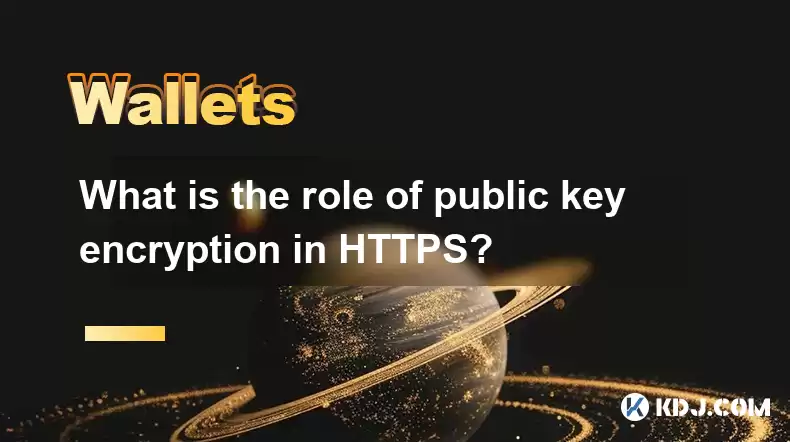
Key Points:
- Public key encryption, specifically RSA and ECC, is crucial for securing the HTTPS connection handshake. It ensures secure exchange of a symmetric key.
- The process involves the server presenting its public key to the client, allowing the client to encrypt a symmetric key.
- This symmetric key is then used for encrypting all subsequent communication, significantly improving performance.
- Public key encryption's role is limited to the initial key exchange; it doesn't encrypt the entire website content.
- Certificate Authorities (CAs) are vital for verifying the authenticity of the server's public key.
What is the role of public key encryption in HTTPS?
HTTPS, or Hypertext Transfer Protocol Secure, relies heavily on public key cryptography to establish a secure connection between a client (like your web browser) and a server (the website you're visiting). Its primary role is not in encrypting the entire website's content, but rather in the crucial initial handshake phase. This handshake establishes a secure channel for subsequent communication.
Public key cryptography utilizes a pair of keys: a public key and a private key. The public key can be freely distributed, while the private key must remain strictly confidential. These keys are mathematically linked; anything encrypted with the public key can only be decrypted with the corresponding private key.
In the HTTPS handshake, the server presents its public key to the client, usually embedded within an SSL/TLS certificate. This certificate is also signed by a trusted Certificate Authority (CA), verifying the server's identity. The browser verifies the certificate's validity before proceeding.
The client then generates a symmetric key – a single, secret key used for encrypting and decrypting all subsequent communication. This symmetric key is then encrypted using the server's public key and sent to the server.
Because only the server possesses the corresponding private key, only it can decrypt the symmetric key. Once decrypted, both the client and server now share this secret symmetric key. All subsequent data exchange during the HTTPS session is encrypted and decrypted using this much faster symmetric encryption.
Two common algorithms used for public key cryptography in HTTPS are RSA (Rivest–Shamir–Adleman) and ECC (Elliptic Curve Cryptography). RSA is an older algorithm, while ECC is generally considered more efficient for the same level of security. The choice of algorithm depends on the server's configuration and the browser's capabilities.
The use of public key encryption for the initial key exchange is critical for security. If the initial exchange wasn't secure, a man-in-the-middle attack could compromise the entire communication. By using public key cryptography, the symmetric key is securely exchanged, ensuring the confidentiality of the entire session.
The HTTPS protocol uses a combination of asymmetric (public key) and symmetric encryption for optimal security and performance. Public key cryptography handles the secure exchange of the symmetric key, while symmetric cryptography handles the encryption and decryption of the actual website data. This hybrid approach balances security with speed. Symmetric encryption is significantly faster than asymmetric encryption, making it ideal for handling large amounts of data.
The role of the Certificate Authority (CA) is paramount. CAs are trusted third-party organizations that verify the identity of website owners and issue digital certificates containing their public keys. This verification ensures that the client is communicating with the intended server and not an imposter.
Without public key encryption, securing the initial key exchange in HTTPS would be significantly more challenging and potentially insecure. It forms the bedrock of the secure communication established by HTTPS, protecting sensitive data during online transactions and interactions. The process is transparent to the user; the browser handles the complexities of the handshake.
Frequently Asked Questions:
Q: Does public key encryption encrypt the entire website content?
A: No. Public key encryption in HTTPS is only used for the initial secure exchange of the symmetric key. The actual website content is encrypted and decrypted using the much faster symmetric encryption algorithm.
Q: What are the common algorithms used in HTTPS public key encryption?
A: The most common algorithms are RSA and ECC (Elliptic Curve Cryptography). ECC is generally considered more efficient than RSA for the same security level.
Q: What is the role of a Certificate Authority (CA)?
A: CAs verify the identity of website owners and issue digital certificates containing their public keys. This ensures the client is connecting to the legitimate server.
Q: What happens if the server's certificate is invalid?
A: Your browser will typically display a warning, indicating a potential security risk. It’s crucial to heed these warnings and avoid proceeding.
Q: Is public key encryption foolproof?
A: While very strong, no encryption method is completely foolproof. Advances in computing power and cryptographic techniques could potentially compromise even the strongest encryption over time. The system relies on the integrity of the CAs and the security practices of the website owners.
Disclaimer:info@kdj.com
The information provided is not trading advice. kdj.com does not assume any responsibility for any investments made based on the information provided in this article. Cryptocurrencies are highly volatile and it is highly recommended that you invest with caution after thorough research!
If you believe that the content used on this website infringes your copyright, please contact us immediately (info@kdj.com) and we will delete it promptly.
- Kazakhstan's Crypto Leap: Bitcoin ETF and Central Asia's Digital Finance Future
- 2025-08-13 12:45:19
- BlockDAG Presale Blazes Past $371M: Fundraising Frenzy Fuels Crypto Sensation
- 2025-08-13 13:05:21
- Meme Coins: Chasing the 2025 Surge – Which Will Moonshot?
- 2025-08-13 10:25:23
- Bitcoin's Wild Ride: Rally, Pullback, and What's Next
- 2025-08-13 10:25:23
- Bitcoin, Bitmax, and Institutional Demand: A New Era of Crypto Investment
- 2025-08-13 10:45:12
- Solana, ROAM, and Airdrops: What's the Buzz in 2025?
- 2025-08-13 11:35:13
Related knowledge
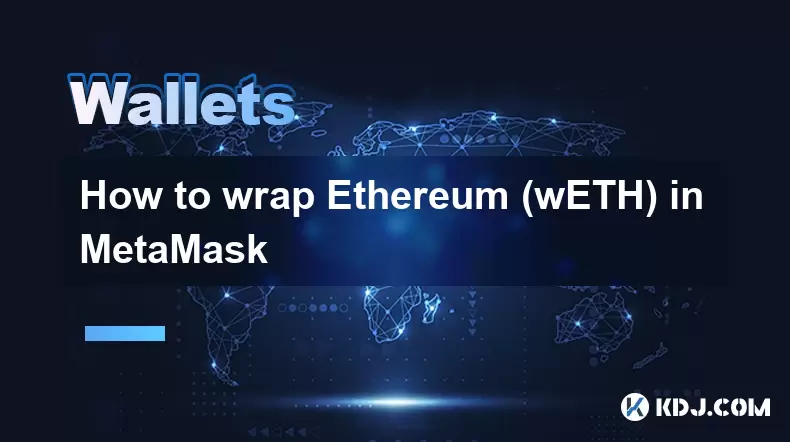
How to wrap Ethereum (wETH) in MetaMask
Aug 13,2025 at 11:36am
Understanding Wrapped Ethereum (wETH)Wrapped Ethereum (wETH) is a tokenized version of native Ethereum (ETH) that conforms to the ERC-20 standard, ena...

How to manage your portfolio in Exodus wallet
Aug 08,2025 at 10:07pm
Understanding the Exodus Wallet InterfaceThe Exodus wallet is a non-custodial cryptocurrency wallet that supports a wide range of digital assets. When...

How to manage your portfolio in Exodus wallet
Aug 13,2025 at 11:35am
Understanding the Exodus Wallet InterfaceThe Exodus wallet is a non-custodial cryptocurrency wallet that supports a wide range of digital assets. Upon...
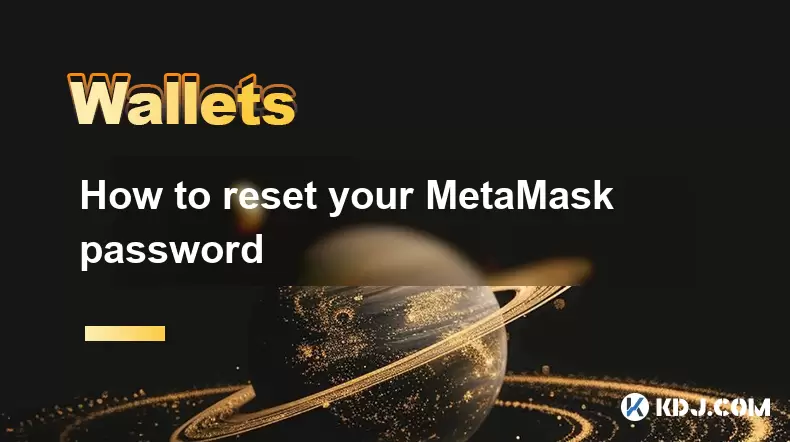
How to reset your MetaMask password
Aug 08,2025 at 01:28pm
Understanding the MetaMask Password Reset ProcessMany users confuse the MetaMask password with the seed phrase or private key, but they serve differen...
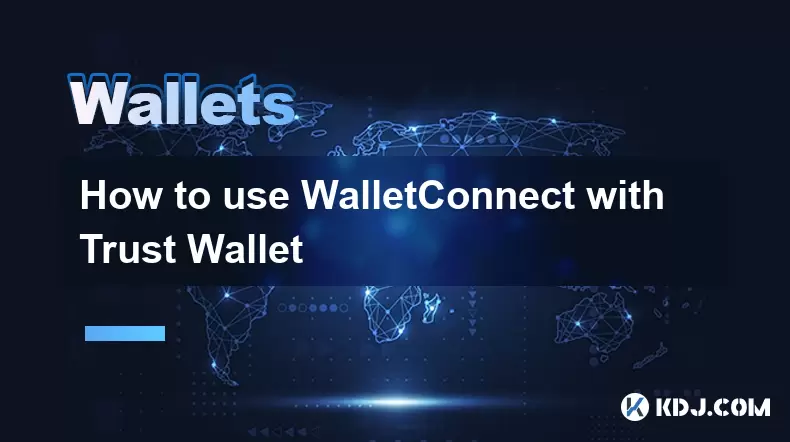
How to use WalletConnect with Trust Wallet
Aug 13,2025 at 01:07am
What Is WalletConnect and Why It Matters for Trust Wallet UsersWalletConnect is an open-source protocol that enables secure communication between dece...
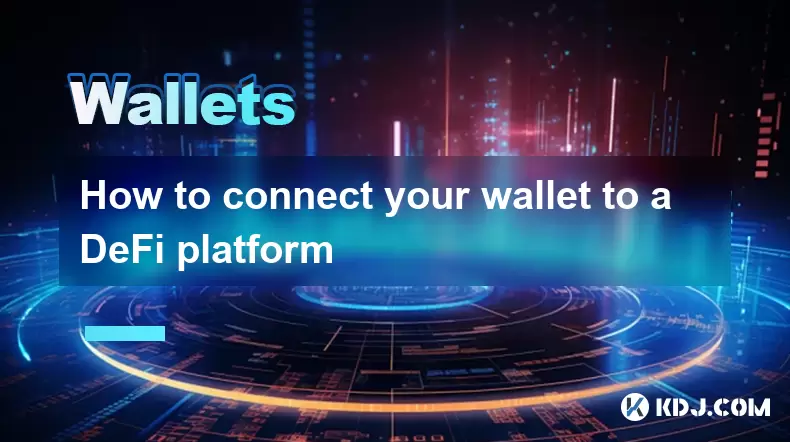
How to connect your wallet to a DeFi platform
Aug 13,2025 at 11:36am
Understanding Wallet Compatibility with DeFi PlatformsBefore connecting your wallet to any DeFi platform, it's essential to ensure your wallet is comp...

How to wrap Ethereum (wETH) in MetaMask
Aug 13,2025 at 11:36am
Understanding Wrapped Ethereum (wETH)Wrapped Ethereum (wETH) is a tokenized version of native Ethereum (ETH) that conforms to the ERC-20 standard, ena...

How to manage your portfolio in Exodus wallet
Aug 08,2025 at 10:07pm
Understanding the Exodus Wallet InterfaceThe Exodus wallet is a non-custodial cryptocurrency wallet that supports a wide range of digital assets. When...

How to manage your portfolio in Exodus wallet
Aug 13,2025 at 11:35am
Understanding the Exodus Wallet InterfaceThe Exodus wallet is a non-custodial cryptocurrency wallet that supports a wide range of digital assets. Upon...

How to reset your MetaMask password
Aug 08,2025 at 01:28pm
Understanding the MetaMask Password Reset ProcessMany users confuse the MetaMask password with the seed phrase or private key, but they serve differen...

How to use WalletConnect with Trust Wallet
Aug 13,2025 at 01:07am
What Is WalletConnect and Why It Matters for Trust Wallet UsersWalletConnect is an open-source protocol that enables secure communication between dece...

How to connect your wallet to a DeFi platform
Aug 13,2025 at 11:36am
Understanding Wallet Compatibility with DeFi PlatformsBefore connecting your wallet to any DeFi platform, it's essential to ensure your wallet is comp...
See all articles

























































































